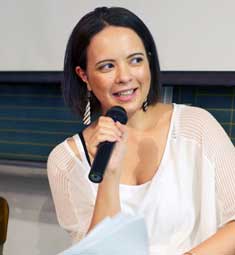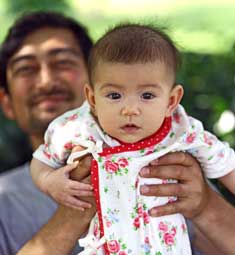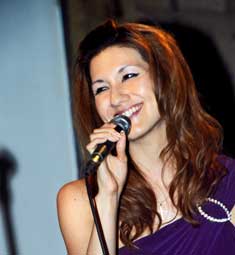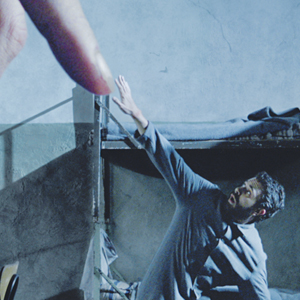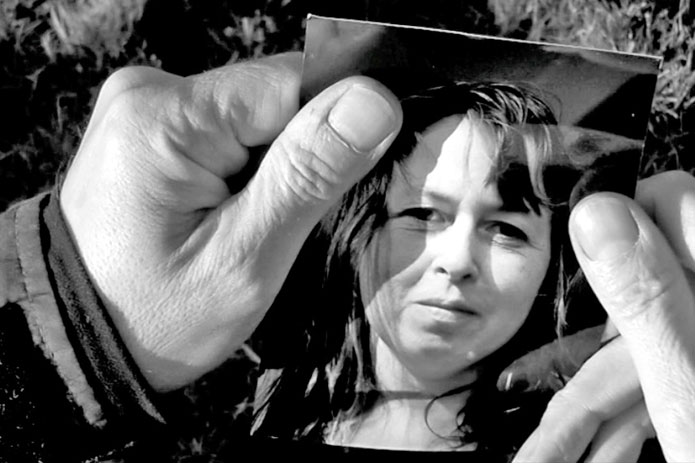Project aims to redefine notions of mixed-race experience
• The term hafu emerged in the 1970s
• 39,727 international marriages at 2001 peak
• Photography, research and film elements
The project has grown in scale and ambition since its 2008 inception in London as a photography and research initiative. Most recently, April witnessed the completion of the film Hafu, about the experiences of mixed-race people living in Japan.
Jointly directed by Megumi Nishikura and Lara Perez Takagi, Hafu follows the lives of five hafu (people who are half Japanese, half another nationality) as they explore what it means to be multiracial and multicultural in a nation that once proudly proclaimed itself to be mono-ethnic.
“My initial motivation was to raise awareness of the somewhat unknown experiences of hafu in Japan”, Marcia Lise, the co-founder of the Hafu Project and thematic advisor to the film, told BCCJ ACUMEN.
“Being a hafu raised in Japan, and being one of those ‘foreign-looking’ individuals in the eyes of many Japanese, I often questioned why I was being categorised and treated as the foreigner, even though I was fully brought up here.“This led me to take action, to give a voice to hafu, to let the world know what it’s like being a hafu in Japan”, Lise said.
Born to an American father and Japanese mother, Lise has relocated to Hawaii with her family.
“As I worked on the Hafu Project, I came to realise that the ideas of race, nation, culture and identity are not fully understood and [that people] could benefit from education”, she said.
The term hafu began to emerge in Japan in the 1970s and has largely become the accepted self-definition of many people born of international relationships.
As the number of international marriages has risen—from 5,545 in 1980 to a peak of 39,727 in 2001—so, too, have the number of hafu children, although the Japanese census does not officially collect this information.
In 2004, of the 39,511 international marriages in Japan, 403 of them were between a Japanese and a British national.
“Growing up in England, always looking different from my blonde-haired, blue-eyed classmates and generally standing out wherever I went annoyed me at first”, said Emiko Evans, a singer and songwriter who contributed one of her songs to the film.“But as I got older, I started to enjoy the attention that I was getting for being a bit [different]. And when I told people I was half Japanese, they would get very interested and ask me all sorts of questions”.
Raised in Nottingham by an English father and Japanese mother, Emiko grew up speaking English and only visited Japan for the first time at the age of 18.
Regretting her inability to communicate with her family here, Evans studied Japanese at the University of Leeds before moving to Tokyo and starting to build a career in music.
“Living in Tokyo now, I find people are very kind to me and treat me warmly and with great interest for having an English side”, she said. “Especially being a fellow island country, I get the impression that the Japanese feel they have quite a few things in common with the British”.
Evans, 33, said she was “fascinated” by the different stories and experiences of her fellow hafu and that, even though each of the people taking part in the photography and film projects had a different tale to tell, their search for identity was quite similar.
“I was really inspired by the positivity of the main characters to accept and embrace their mixed backgrounds and their determination to help others, especially the next generation of hafu in Japan”, she said.
“I hope this film will encourage anyone with a mixed background who feels alone, and make them realise that there are so many others all [on] a similar journey”.
Ricky Boyd took part in the initial photography project and believes many mixed-race people tend to gravitate towards each other because of their shared experiences.
“You do seem to bump into one another, or maybe just notice each other more than you would otherwise”, said Boyd, 37, a cameraman for NHK who lives in Bethnal Green, London.
“Being exposed to more than one culture is a wonderful thing, whether you are mixed race or not”, said Boyd, whose British father and Japanese mother still live in Osaka.
“Most importantly, I was lucky enough to experience life in both countries at a very local level, and I was very much immersed in both cultures, traditions and surroundings”, he said.
“Having met other ‘halfies’, I understand how very lucky we are, as some experiences can be very biased towards one or the other.
“Finding that all-important balance is dependent on parenting, and how much each parent is willing to sacrifice in order for their children to explore their ‘other side’”, he said.
Boyd said he enjoys the fact “that the two halves that make me whole are so very different from one another”.
“Adults are excited by what makes them different whereas children often want to be the same as each other. Growing up being different can be tough and it is up to the parents to encourage their kids to be confident in themselves rather than look for comparisons in others”.
And with a half-German-half-Chinese partner, Boyd will be passing that wisdom on to their “quarty” daughter.
Film: www.hafufilm.com
Hafu Project: www.hafujapanese.org

